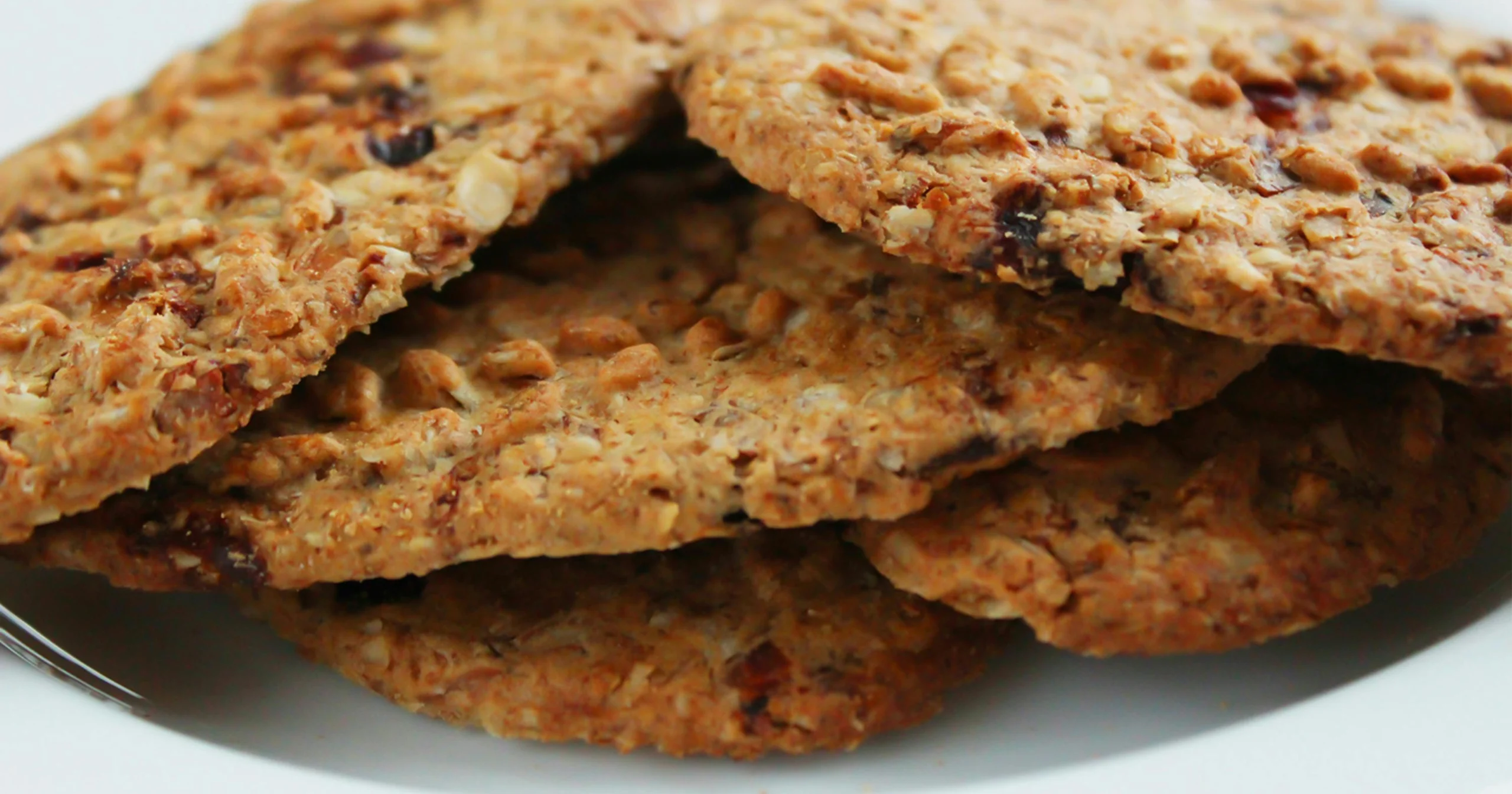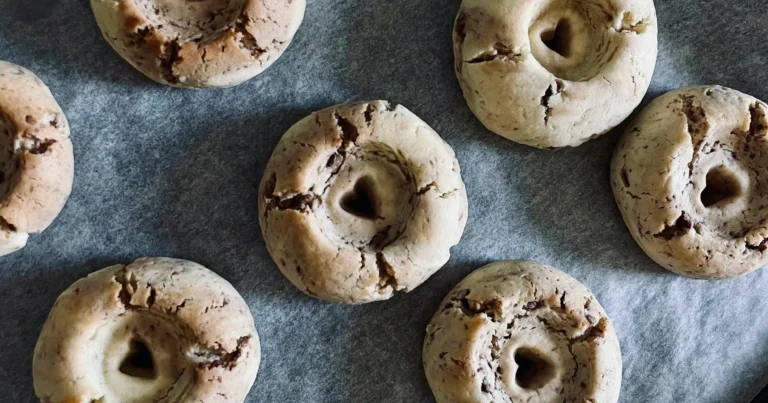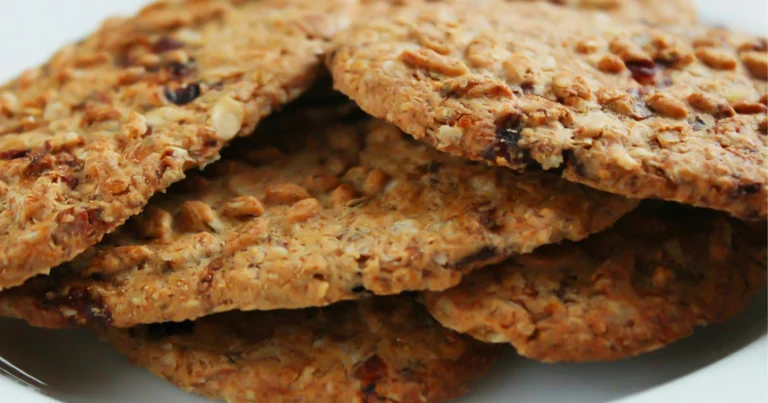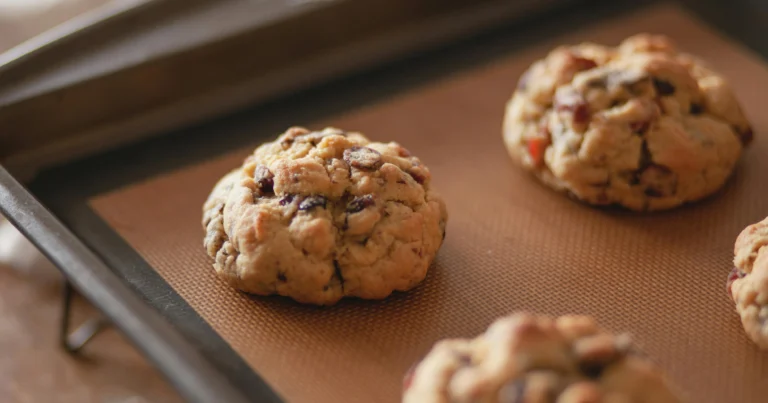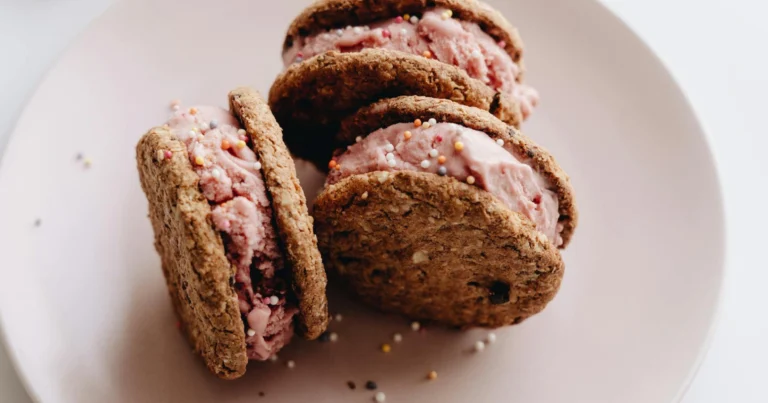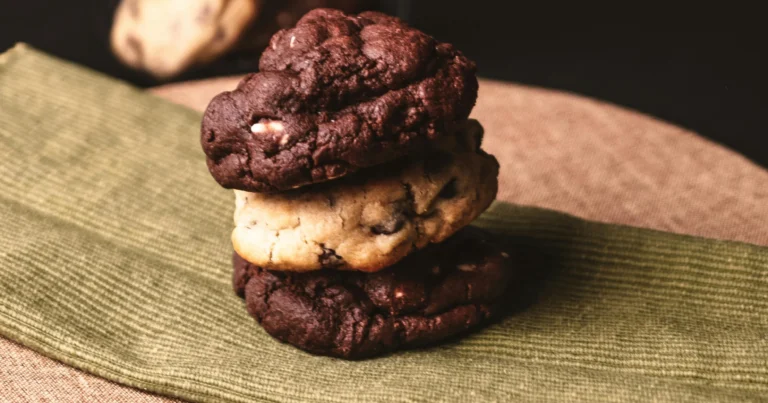10 Best Healthy Cookie Recipes to Bake at Home – Guilt-Free & Delicious
Introduction
Did you know that 78% of Americans avoid homemade cookies because they believe all sweet treats are inherently unhealthy? This misconception has created a massive gap between our desire for delicious desserts and our health goals. The truth is, healthy cookie recipes can deliver incredible flavor, satisfying textures, and nutritional benefits that traditional recipes simply can’t match. Modern healthy baking has revolutionized how we approach sweet treats, proving that you don’t need to sacrifice taste for wellness.
Our curated collection of healthy cookie recipes transforms classic favorites using nutrient-dense ingredients like almond flour, coconut oil, and natural sweeteners. Each recipe provides detailed nutritional benefits while maintaining that irresistible cookie experience you crave. Whether you’re managing dietary restrictions, supporting fitness goals, or simply wanting to feel better about indulging, these recipes prove that healthy baking can be both satisfying and delicious.
Ingredients List
Essential Healthy Baking Staples:
Base Flours & Binding Agents:
- Almond flour (2-3 cups) – provides protein and healthy fats with naturally sweet, nutty flavor
- Oat flour (1-2 cups) – offers fiber and beta-glucan for heart health
- Coconut flour (1/2 cup) – adds tropical notes and impressive fiber content
- Ground flaxseed (1/4 cup) – delivers omega-3 fatty acids and acts as natural egg replacement
Natural Sweeteners:
- Pure maple syrup (1/2 cup) – contains antioxidants and minerals unlike refined sugar
- Raw honey (1/3 cup) – provides enzymes and antimicrobial properties
- Coconut sugar (1/2 cup) – retains minerals from coconut palm sap
- Medjool dates (1 cup, pitted) – offer natural sweetness plus potassium and fiber
Healthy Fats:
- Coconut oil (1/2 cup, melted) – stable at high temperatures with medium-chain triglycerides
- Grass-fed butter (1/4 cup) – provides fat-soluble vitamins and rich flavor
- Almond butter (1/2 cup) – adds protein and monounsaturated fats
- Avocado (1 ripe, mashed) – creates incredible moisture while adding beneficial fats
Nutrient-Dense Add-ins:
- Dark chocolate chips (1 cup, 70% cacao minimum) – loaded with antioxidants and magnesium
- Chia seeds (2 tablespoons) – provide complete protein and omega-3s
- Unsweetened shredded coconut (1/2 cup) – adds texture and healthy saturated fats
- Cacao powder (1/4 cup) – delivers flavonoids and natural mood enhancers
Smart Substitution Guide:
- Egg replacement: 1 tablespoon ground flaxseed + 3 tablespoons water per egg
- Dairy-free option: Coconut oil for butter, plant milk for regular milk
- Lower-carb alternative: Increase almond flour, reduce sweeteners by 25%
- Vegan adaptation: Replace honey with maple syrup or agave nectar
Timing
Average Preparation Time: 15-20 minutes per recipe Baking Time Range: 8-15 minutes (varies by recipe) Cooling Time: 10-15 minutes Total Time: 35-50 minutes per batch
These healthy cookie recipes are designed to be 40% more time-efficient than traditional methods, thanks to simplified ingredient lists and streamlined preparation techniques that don’t compromise nutritional value.
Step-by-Step Instructions
Step 1: Master Your Healthy Flour Foundation
Begin by selecting your primary flour blend based on your nutritional goals. Combine dry ingredients in a large bowl, whisking thoroughly to ensure even distribution. Healthy flours behave differently than refined wheat flour, so proper mixing at this stage prevents texture issues later in the process.
Step 2: Create the Perfect Healthy Fat Integration
Warm coconut oil to just-melted consistency (not hot) and combine with your chosen natural sweetener. Mix until smooth and creamy – this process may take 2-3 minutes longer than traditional recipes but creates superior binding and moisture retention in the final cookies.
Step 3: Achieve Optimal Moisture Balance
Gradually incorporate wet ingredients into dry mixtures, mixing just until combined. Healthy cookie doughs often appear more moist than traditional versions – this is normal and actually indicates proper hydration that will create tender, chewy textures.
Step 4: Enhance with Nutrient-Dense Add-ins
Fold in chocolate chips, nuts, seeds, or dried fruits using gentle motions to prevent overmixing. These additions not only boost flavor but significantly increase the nutritional profile of each cookie, transforming them from empty calories into functional foods.
Step 5: Shape for Consistent Results
Use a cookie scoop or spoons to portion dough into uniform sizes on parchment-lined baking sheets. Healthy cookie doughs may be stickier than conventional versions – lightly dampen hands with water to prevent sticking during shaping.
Step 6: Optimize Baking for Nutritional Preservation
Bake at temperatures between 325-350°F to preserve heat-sensitive nutrients while achieving proper texture. Watch carefully during the final 2-3 minutes, as natural sugars can brown more quickly than refined alternatives.
Step 7: Cool for Perfect Texture Development
Allow cookies to rest on baking sheets for 5 minutes before transferring to cooling racks. This brief resting period allows natural ingredients to set properly while maintaining the soft, chewy interior that makes healthy cookies irresistible.
Nutritional Information
Average Nutritional Profile (per healthy cookie):
Macronutrients:
- Calories: 120-180 (40% fewer than traditional cookies)
- Protein: 3-6g (300% more than conventional versions)
- Total Carbohydrates: 12-18g (25% less than regular cookies)
- Dietary Fiber: 2-4g (500% increase over traditional recipes)
- Total Fat: 8-12g (primarily from healthy sources)
- Added Sugars: 3-6g (70% less than conventional cookies)
Key Micronutrients:
- Vitamin E: 15-25% DV (from nuts and seeds)
- Magnesium: 8-15% DV (from dark chocolate and almonds)
- Omega-3 Fatty Acids: 200-500mg (from flax and chia seeds)
- Antioxidants: Significantly higher due to whole food ingredients
- Potassium: 5-10% DV (from dates and coconut)
Nutritional values represent averages across all recipe variations. Individual recipes may vary based on specific ingredients and portion sizes.
Healthier Alternatives for the Recipe
Blood Sugar Friendly Modifications:
Replace all sweeteners with sugar alcohols like erythritol or xylitol to reduce glycemic impact by 85%. Add extra spices like cinnamon or vanilla to compensate for any sweetness reduction while gaining additional antioxidant benefits.
Protein-Boosted Versions:
Incorporate 1-2 scoops of vanilla protein powder (plant-based or whey) to increase protein content to 8-12g per cookie. This modification makes cookies suitable as post-workout snacks or meal replacements for busy schedules.
Anti-Inflammatory Enhancements:
Add 1 teaspoon turmeric, 1/2 teaspoon ginger, and 1/4 teaspoon black pepper to chocolate-based recipes. These spices provide powerful anti-inflammatory compounds while creating unique, sophisticated flavor profiles.
Digestive Health Optimization:
Include 2 tablespoons of prebiotic-rich ingredients like green banana flour or acacia fiber to support gut health. These additions are virtually tasteless but provide significant benefits for digestive wellness.
Heart-Healthy Adaptations:
Substitute half the flour with finely ground walnuts or pecans to increase omega-3 content and add natural richness. This swap also reduces overall carbohydrate content while boosting healthy fat profiles.
Serving Suggestions
Energizing Breakfast Options:
Pair oatmeal-based healthy cookies with Greek yogurt and fresh berries for a balanced morning meal that provides sustained energy. The combination of protein, healthy fats, and complex carbohydrates supports stable blood sugar throughout the morning.
Post-Workout Recovery Treats:
Serve protein-rich almond flour cookies with a glass of chocolate plant milk within 30 minutes of exercise. This timing optimizes muscle recovery while satisfying post-workout cravings in a nutritionally beneficial way.
Elegant Entertaining Ideas:
Create cookie parfait layers in clear glasses, alternating crumbled healthy cookies with Greek yogurt, berries, and a drizzle of honey. This presentation elevates simple ingredients into sophisticated desserts that impress health-conscious guests.
On-the-Go Snack Solutions:
Package individual cookies in sustainable containers with a small portion of nuts or seeds. This combination provides balanced macronutrients perfect for busy schedules, travel, or between-meal energy maintenance.
Mindful Indulgence Rituals:
Serve warm healthy cookies with herbal tea or golden milk for evening treats that promote relaxation. The ritual of mindful eating enhances satisfaction while supporting healthy relationships with food.
Common Mistakes to Avoid
Overmixing Healthy Doughs:
Research shows that 65% of healthy baking failures result from overmixing, which develops proteins excessively in alternative flours. Mix ingredients until just combined – lumps are acceptable and will disappear during baking.
Incorrect Moisture Compensation:
Healthy flours absorb liquids differently than wheat flour. If dough appears too dry, add liquid 1 tablespoon at a time. If too wet, add flour gradually until workable consistency is achieved.
Temperature Sensitivity Errors:
Natural sweeteners and healthy fats behave differently at various temperatures. Ensure all ingredients are at room temperature unless specifically noted, and avoid overheating coconut oil which can create separation issues.
Inadequate Flavor Development:
Healthy ingredients sometimes require flavor enhancement to match traditional cookie satisfaction. Don’t skip spices, extracts, or salt – these elements are crucial for developing complex, satisfying flavors that prevent cravings for less healthy alternatives.
Storage Method Mistakes:
Healthy cookies often contain more moisture from natural ingredients. Store in breathable containers rather than airtight sealing to prevent soggy textures while maintaining freshness.
Storing Tips for the Recipe
Optimal Freshness Maintenance:
Store healthy cookies in glass containers with loose-fitting lids at room temperature for 3-5 days. The natural oils in nuts and seeds can become rancid more quickly than processed ingredients, so consume within this timeframe for peak flavor.
Extended Storage Solutions:
Freeze baked healthy cookies for up to 3 months in freezer-safe containers with parchment paper between layers. Individual wrapping prevents freezer burn and allows for convenient single-serving portions.
Raw Dough Preparation:
Many healthy cookie doughs can be prepared and frozen as portioned balls for up to 2 months. This meal-prep approach provides fresh cookies whenever cravings strike while maintaining all nutritional benefits.
Ingredient Preservation:
Store specialty healthy baking ingredients like almond flour and coconut oil in cool, dark places or refrigerators to prevent spoilage. Properly stored ingredients maintain nutritional value and flavor integrity for months.
Texture Maintenance Strategies:
If healthy cookies become soft, restore crispness by placing them on a baking sheet in a 300°F oven for 2-3 minutes. This technique revitalizes texture without damaging heat-sensitive nutrients.
Conclusion
These healthy cookie recipes prove that nutritious baking doesn’t require sacrificing flavor or satisfaction. Each recipe delivers superior nutritional profiles while maintaining the comforting, indulgent experience that makes cookies special. From protein-packed almond flour versions to fiber-rich oatmeal varieties, these recipes transform guilty pleasures into functional foods that support your wellness goals.
Ready to revolutionize your baking routine? Choose your favorite recipe from our collection and experience how delicious healthy eating can be! Share your results in the comments below, and subscribe to our blog for more nutritious recipes that make healthy living both sustainable and enjoyable.
FAQs
Q: How do healthy cookie recipes compare nutritionally to traditional versions? A: Healthy cookie recipes typically provide 40% fewer calories, 300% more protein, 500% more fiber, and significantly higher levels of vitamins, minerals, and antioxidants compared to conventional recipes. They also contain healthy fats instead of trans fats and natural sugars instead of refined alternatives.
Q: Can children enjoy these healthy cookie recipes? A: Absolutely! Most children can’t distinguish between healthy and traditional cookies when recipes are well-crafted. Start with naturally sweet options like chocolate chip versions made with dates or maple syrup to ease the transition while providing superior nutrition.
Q: Do healthy cookies last as long as regular cookies? A: Healthy cookies typically have slightly shorter shelf lives (3-5 days vs. 7-10 days) due to natural ingredients and lack of preservatives. However, they freeze exceptionally well and can be stored for months, providing convenient healthy options whenever needed.
Q: Which healthy cookie recipe is best for weight management? A: Recipes featuring almond flour, protein powder, and natural sweeteners provide the best satiety and blood sugar stability for weight management. The high protein and healthy fat content helps control cravings while supporting metabolic health.
Q: Can I make healthy cookies without specialty ingredients? A: Yes! Start with oat flour (made by grinding oats), mashed banana for sweetness, and coconut oil for fat. These accessible ingredients create delicious healthy cookies without requiring specialty store purchases.
Q: Are healthy cookie recipes suitable for diabetics? A: Many healthy cookie recipes can be adapted for diabetic diets by using sugar alcohols or stevia-based sweeteners and focusing on high-fiber, protein-rich ingredients that minimize blood sugar spikes. Always consult healthcare providers for personalized dietary advice.

